

1 year

There are four seasons in each year, and there are many different
beautiful views and fun events to enjoy in each season.
However, in the near future, we may lose that annual cycle due to
global warming.
Let's take a look at the future, when global warming has progressed.
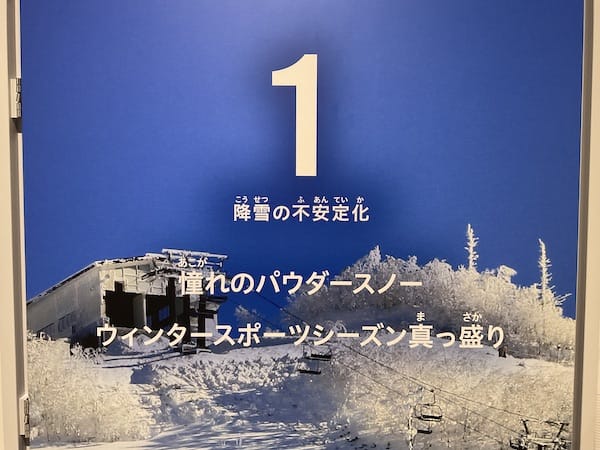
Destabilization of snowfall
Lovely powder snow
The peak of the winter sports season
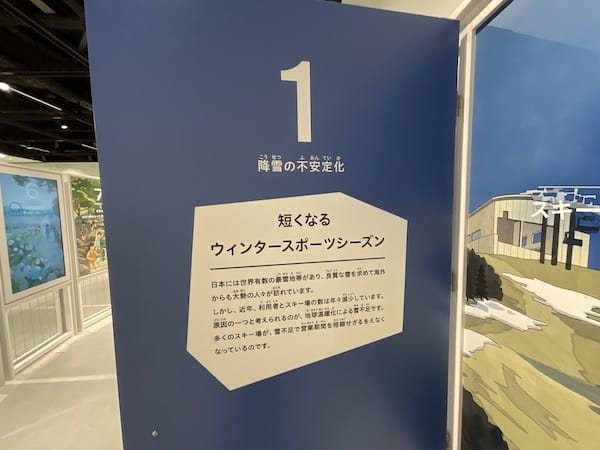
Destabilization of snowfall
A shorter winter sports season
Japan has areas with some of the heaviest snowfall in the world.
Many people visit from abroad seeking Japan's high quality snow.
However, in recent years, the number ski resorts and users has
decreased year by year. One likely cause of this is lack of snow due
to global warming. Many ski resorts have been forced to shorten
their open season due to lack of snow.
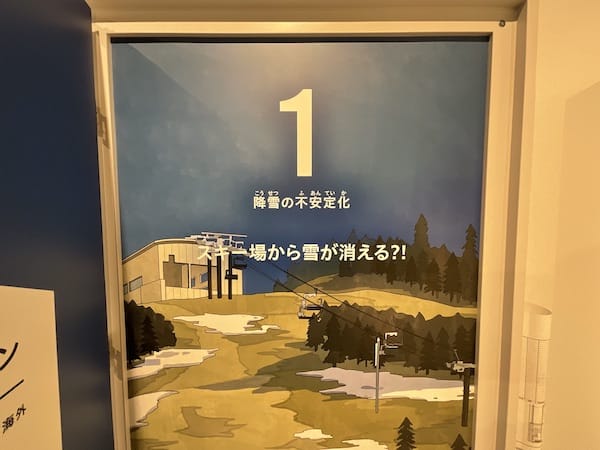
Destabilization of snowfall
Snow will disappear from ski resorts?!
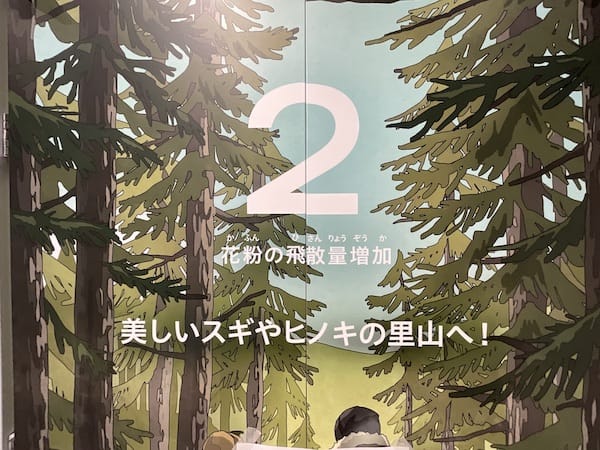
More pollen scattering
Foothill forests with beautiful cedar and cypress trees!
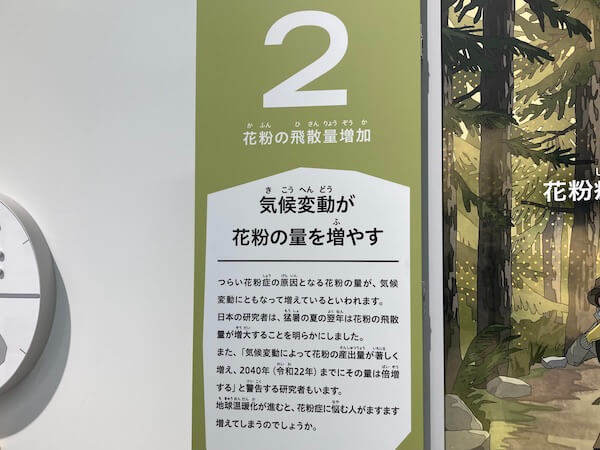
More pollen scattering
Climate change increases the amount of pollen
It is said that climate change is increasing the amount of pollen,
which causes discomforting hay fever.
Japanese researchers have found that pollen dispersal increases in
the year after an especially hot summer.
Some researchers have warned that "Climate change will significantly
increase pollen production, so the amount doubles by 2040."
Will more and more people suffer from hay fever as global warming
continue?
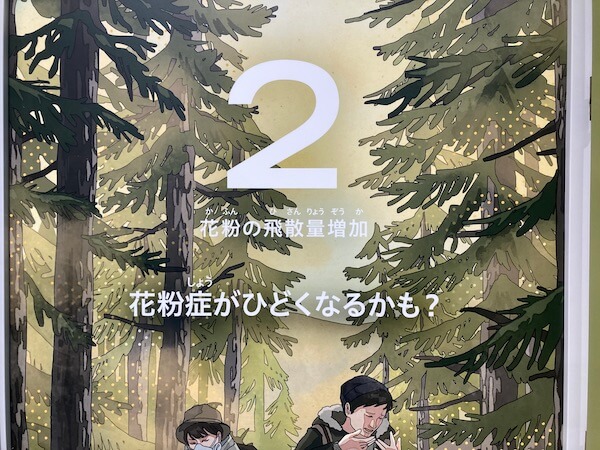
More pollen scattering
Will hay fever get even worse?
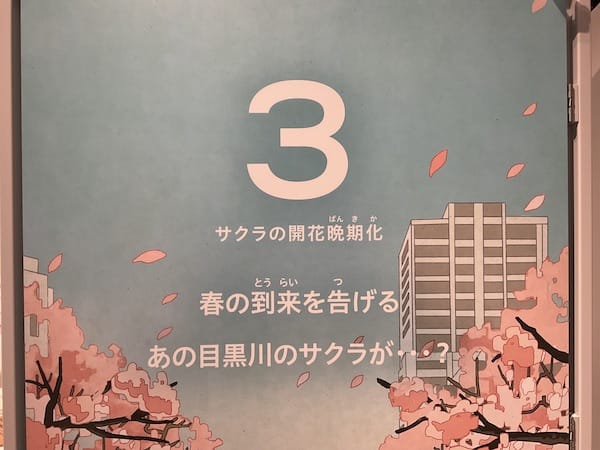
Delayed blooming of cherry blossoms
What will happen to cherry blossoms on the Meguro River,
that announce the arrival of spring?
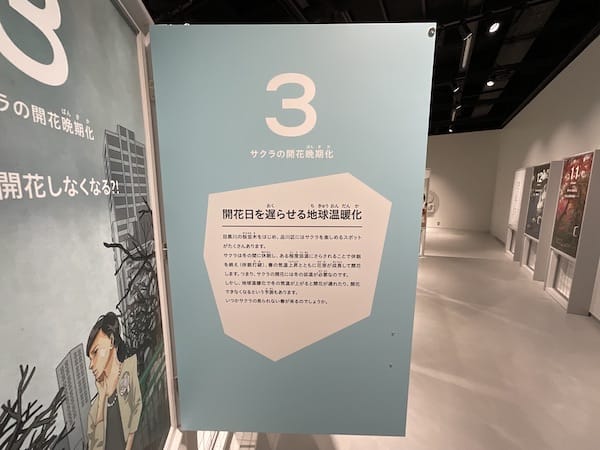
Delayed blooming of cherry blossoms
Global warming will delay the blooming date
There are many places where you can enjoy cherry blossoms in
Shinagawa City, such as the cherry tree lined streets along the
Meguro River.
Cherry trees go dormant in winter, but when they are exposed to a
certain low temperature, their dormancy ends. As the temperature
rises in the spring, flower buds grown and finally bloom. That is to
say, the low temperatures of winter are actually necessary in order
for cherry blossoms to bloom.
However, some predictions say that cherry blossoms will be delayed
or be unable to bloom at all if winter temperatures rise due to
global warming.
Will there come a day when we can no longer see cherry blossoms in
spring?

Delayed blooming of cherry blossoms
Will cherry trees not bloom any more?
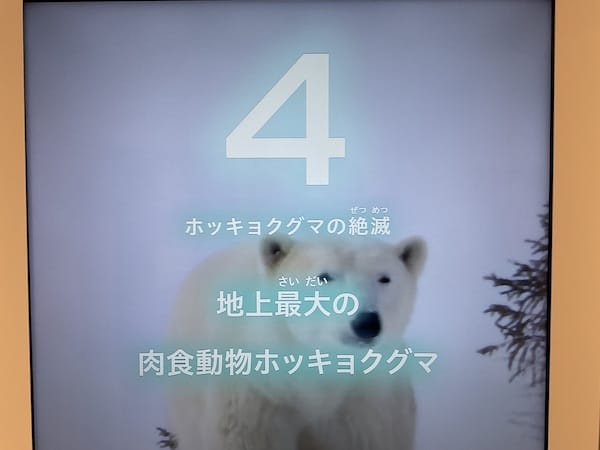
Extinction of polar bears
Polar bears, the largest land carnivores on Earth
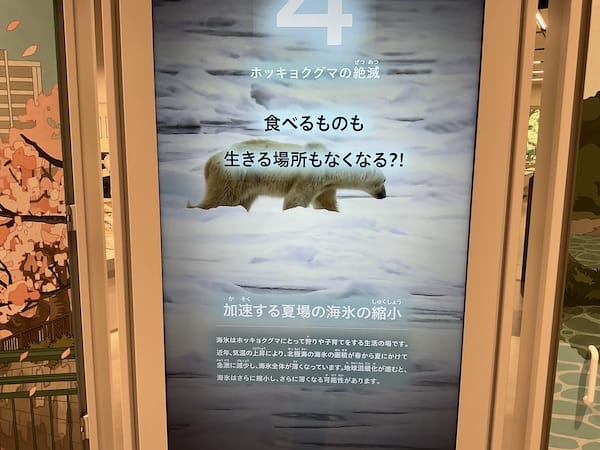
Extinction of polar bears
Polar bears will have nothing to eat and nowhere to live?!
Summer sea ice shrinkage is accelerating
Sea ice is a habitat where polar bears hunt and raise their cubs.
In recent years, rising temperatures has caused the area of sea ice
on the Arctic Ocean to decrease sharply from spring to summer, and
sea ice overall has become thinner. As global arming progresses, it
is probable that sea ice will shrink and become thinner.
Impacts on the ecosystem have already begun to appear, as the
numbers of polar bears and seals have decreased.
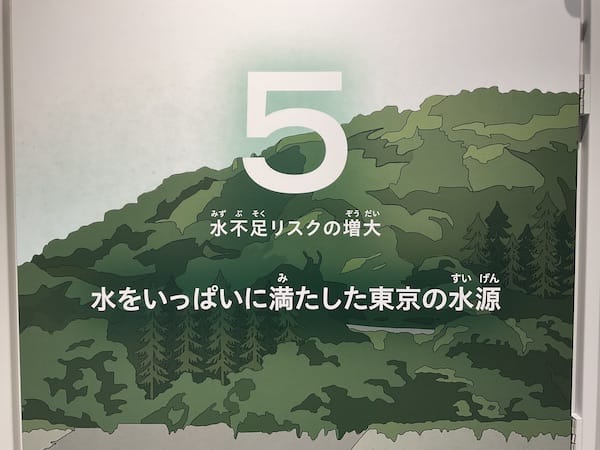
Higher risk of water shortages
Water sources of Tokyo, filled with water
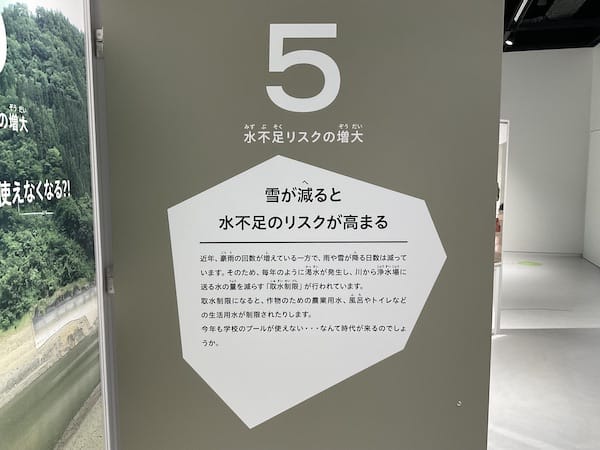
Higher risk of water shortages
Decreased snowfall increases the risk of water shortages
In recent years, instances of torrential rain have increased, but
the number of days that snow or rain fall has actually decreased. As
a result, there are droughts almost every year, and water intake
restrictions have been imposed in order to reduce the amount of
water sent from rivers to waterworks.
Water intake restrictions limit the amount of agricultural water
available to crops, and household water for baths and toilets. Will
there come a time when schools can't even use their swimming pools?
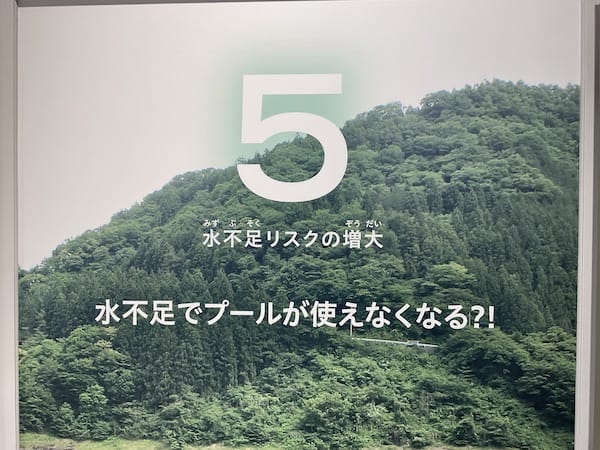
Higher risk of water shortages
Pools will be unusable for lack of water?!
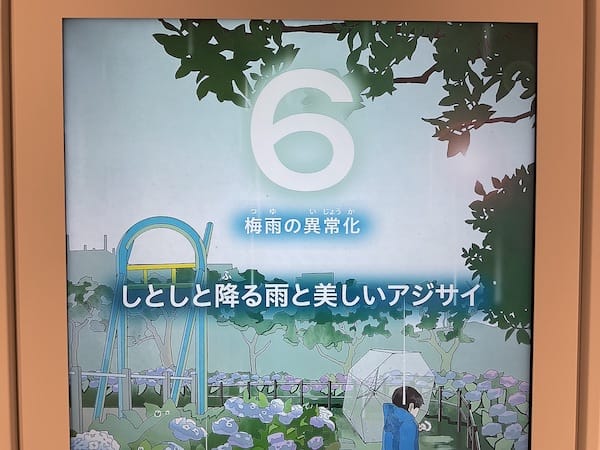
Disruption of the rainy season
Drizzling rain and beautiful hydrangea
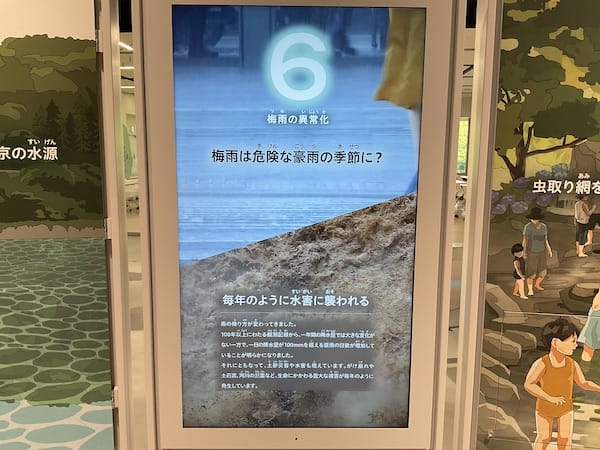
Disruption of the rainy season
Will the rainy season bring dangerous torrential rains?
Floods will strike almost ever year
Rain fall patterns have changed. Over 100 years of observations have
shown that while annual precipitation has not changed significantly,
there are a growing number of days with torrential rainfall of more
than 100 mm.
Along with this change have come an increasing number of sediment
and flooding related disasters. Almost every year there is more
life-threatening damage caused by landslides, debris flows, and
river floods.
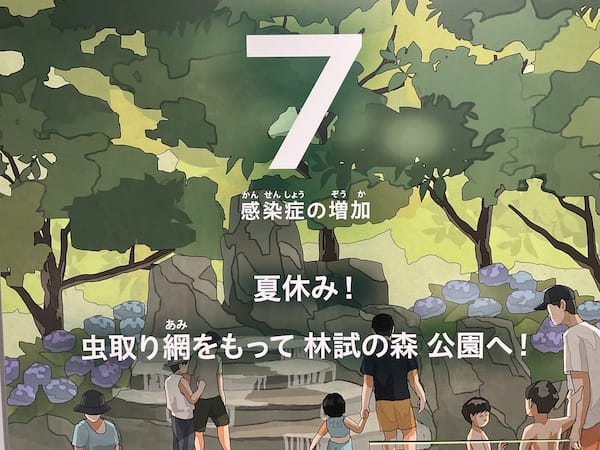
More infectious diseases
Summer vacation! Grab a bug catching net and head to Rinshi-no-Mori
Park!
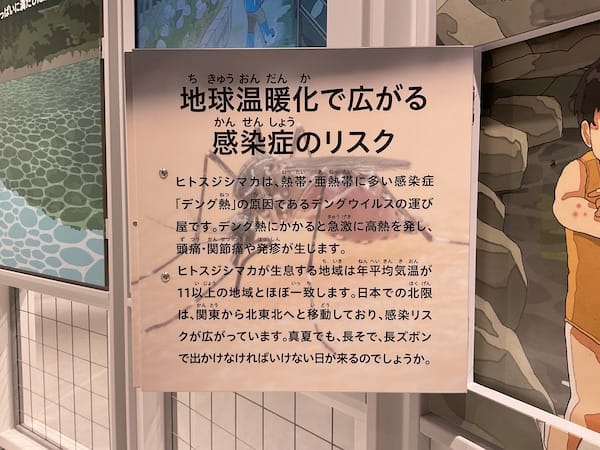
More infectious diseases
Risk of infectious disease outbreaks growing due to global
warming
Asian tiger mosquitoes carry the dengue virus, which is the cause of
the infectious disease known as dengue fever, a common affliction in
the tropics and subtropics. Victims of dengue fever develop a high
fever, headache, joint pain, and rashes.
Asian tiger mosquitoes inhabit areas where the average annual
temperature is 11˚ C or higher, almost the same as dengue virus. the
northern limit of this area in Japan is moving from the Kanto region
towards the northern Tohoku region, spreading the risk of
infection.
Will a day come when we must wear long sleeves and long pants even
in the middle of summer?
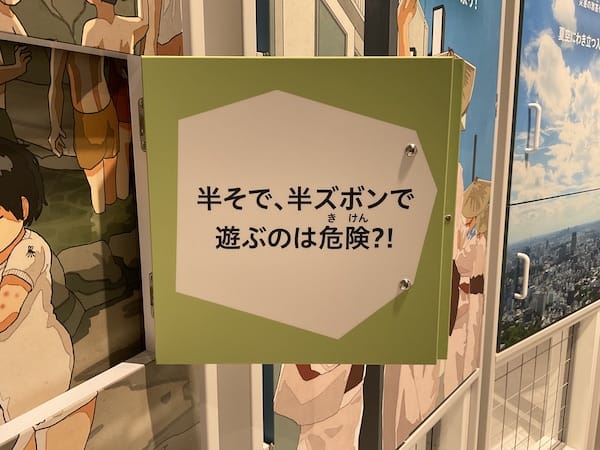
More infectious diseases
It's dangerous to play with short sleeve shirts and pants?!

Higher risk of heat stroke
A festival in Shinagawa City that brings excitement to summer!

Higher risk of heat stroke
Heat waves are life-threatening events
According to observations recorded for nearly 100 years, it is clear
that the number of very hot days with a daily high temperature of
35˚ C or higher has tended to increase in recent years. The same
goes for hot nights, when the daily low temperature does not fall
below 25˚ C.
Because of this, more people are suffering heat strokes, and a
growing number of deaths.
Will the day come when we can no longer hold festivals such as Oi
Dontaku and Togoshi Ginza Matsuri?

Higher risk of heat stroke
There will be more deaths due to heat stroke!
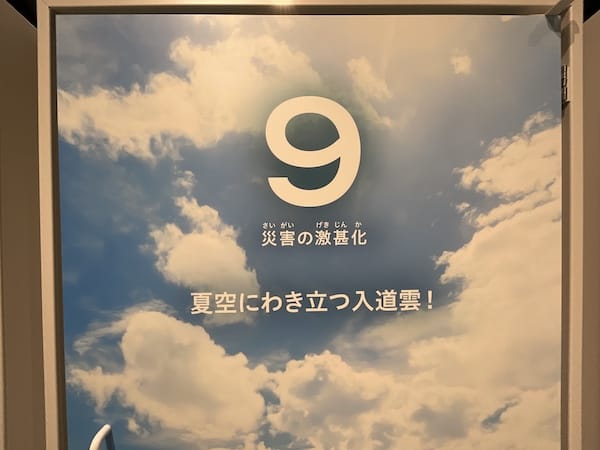
Intensification of disasters
Cumulonimbus clouds in the summer sky!
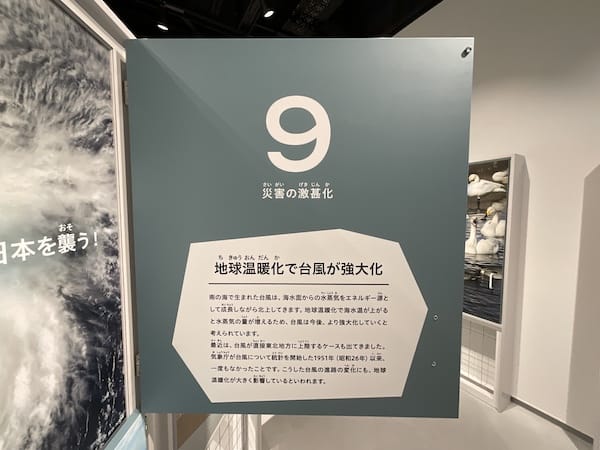
Intensification of disasters
Global warming is causing typhoons to intensify
Typhoons formed in southern seas use water vapor from the surface of
the sea as their energy source to grow as they move north. As
seawater temperature rises due to global warming, the amount of
water vapor increases, so it is expected that typhoons will become
even stronger in the future.
Recently, there have been typhoons that make landfall directly in
the Tohoku region. This had not been recorded since 1951, when the
Japan Meteorological Agency started keeping statistics on typhoons.
It is said that global warming greatly influences this change in the
course of typhoons.
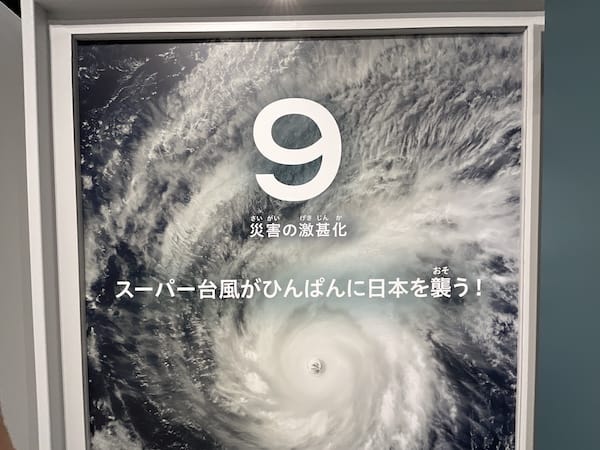
Intensification of disasters
Super typhoons will frequently strike Japan!

Poor harvest / Poor catch
Harvest and appetite in autumn
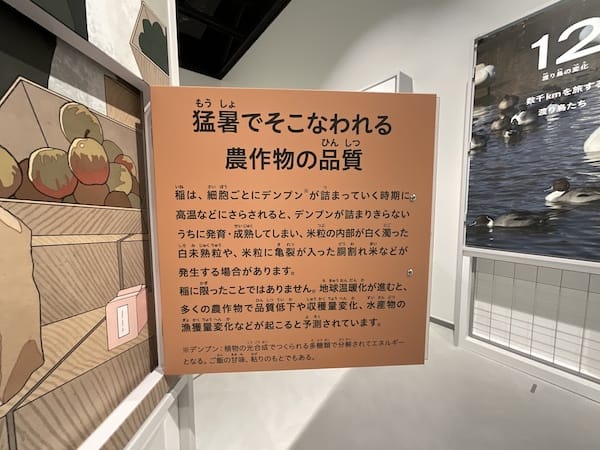
Poor harvest / Poor catch
Crop quality damaged by heat waves
If rice is exposed to high temperatures in the period when each cell
is filled with starch is accumulated in each cell*, the cells will
grow and mature before they fill with starch. This results in rice
grains becoming cloudy, white, and immature, or else forming
cracks.
The impact is not limited to rice. As global warming progresses, it
is predicted that there will be quality deterioration and yield
changes in many crops, and decreased catches of marine products.
*Starch: Polysaccharides which are produced by photosynthesis in
plants, then broken down in the body to provide energy. They also
give rice its sweetness and sticky texture.
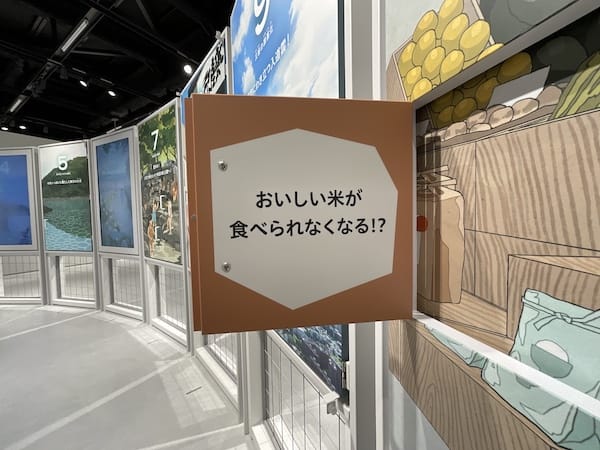
Poor harvest / Poor catch
We won't be able to eat delicious rice any more?!
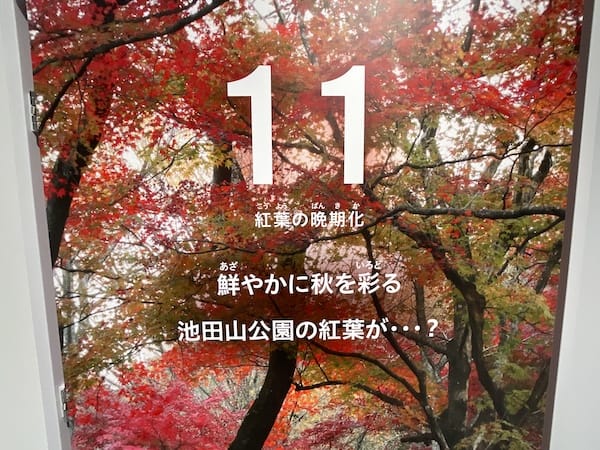
Delayed autumn leaves
What will happen to the colorful
autumn leaves in Ikedayama Park?
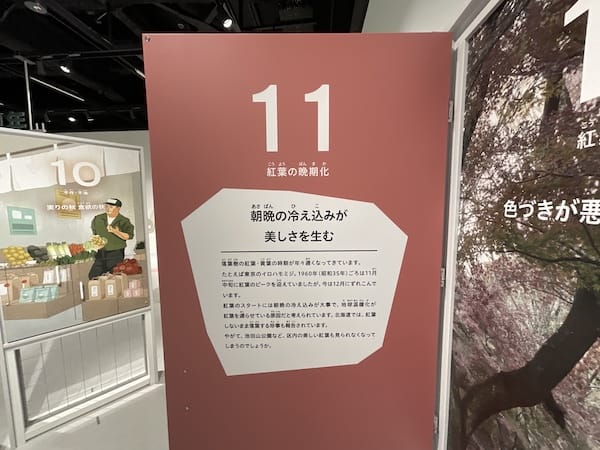
Delayed autumn leaves
Morning and evening chills bring beauty
Red and yellow autumn leaves are appearing on deciduous trees later
every year.
For example, Japanese maple trees in Tokyo. In 1960, the peak of
autumn colors was in the middle of November, but now it is delayed
until December.
The start of autumn leaves really depends on morning and evening
chills and it is thought that global warming has delayed the arrival
of autumn leaves. It has been reported that in Hokkaido, leaves are
falling from tree without even turning red.
Will beautiful autumn leaves soon disappear from Ikedayama Park and
the rest of Shinagawa City?
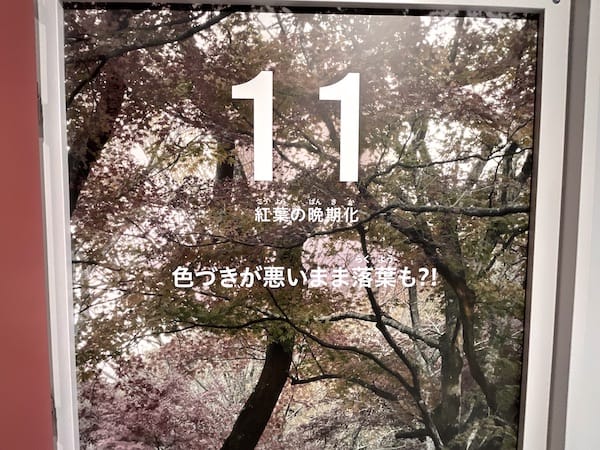
Delayed autumn leaves
Deciduous tree leaves falling with little coloration?!
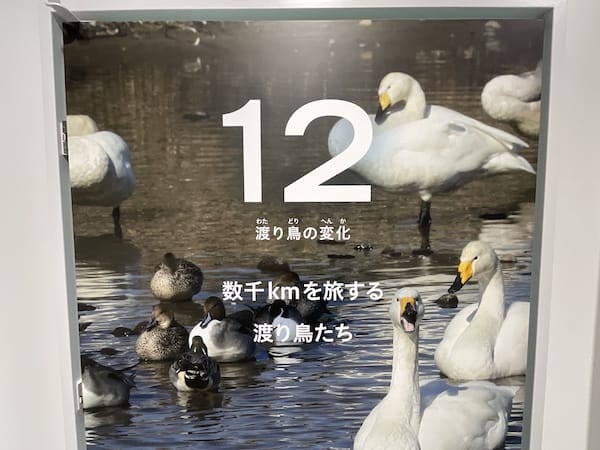
Changes in migratory birds
Migratory birds that travel thousands of kilometers
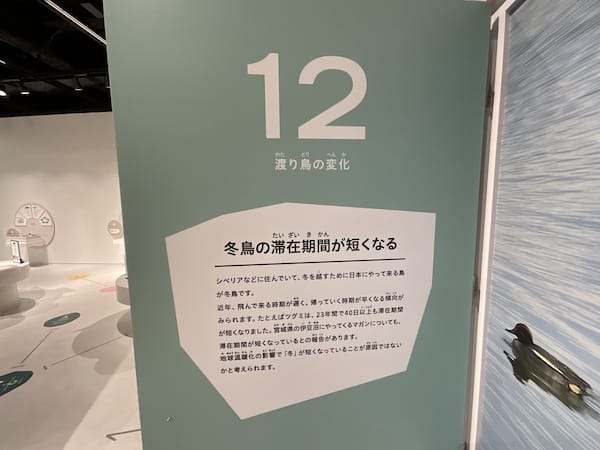
Changes in migratory birds
The length of stay of winter birds has gotten shorter
Winter birds migrate from Siberia to Japan to pass the winter.
In recent years, these birds tend to fly to Japan later in the year,
and return to Siberia earlier the following year. For example, in
the past 23 years the stay period of thrushes has decreased by more
than 40 days. There have also been reports that white-fronted geese
from Izunuma in Miyagi Prefecture stay for a shorter time too. It is
thought that the reason for this is winter growing shorter due to
global warming.

Changes in migratory birds
We won't be able to see ducks or swans any more?!

Can you imagine a year in Japan without four seasons?